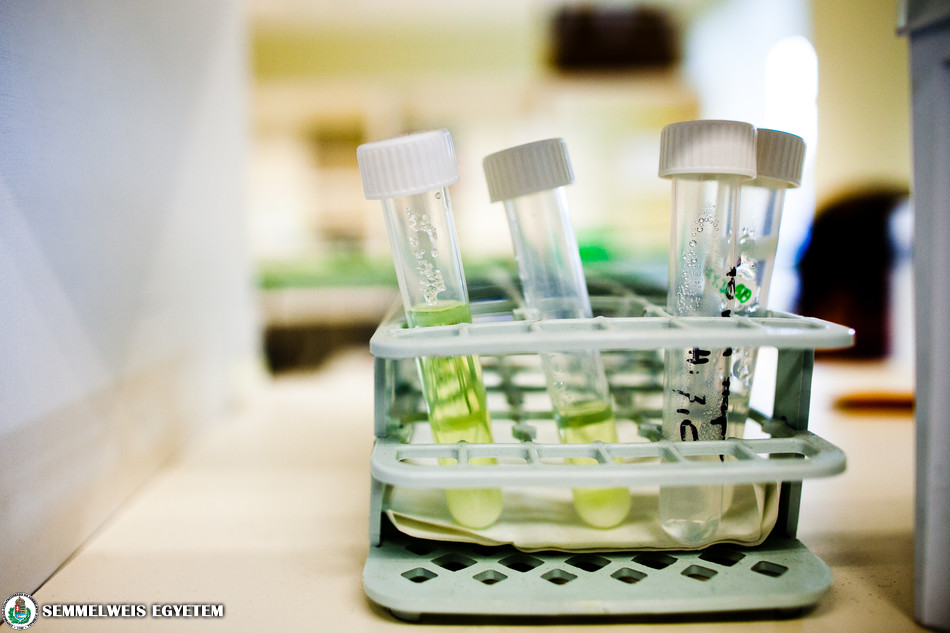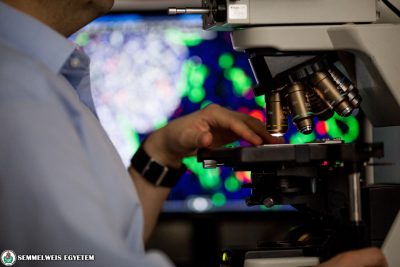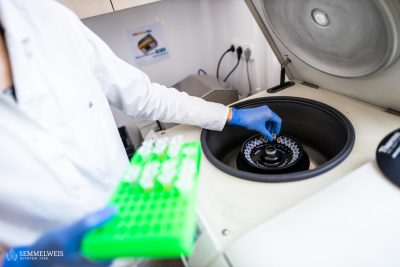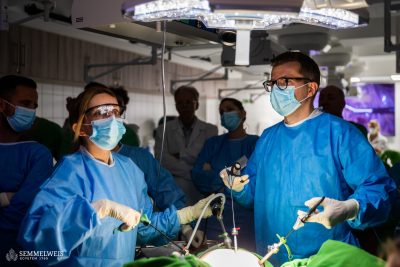The National Research, Development and Innovation Office (NFKI) prepared the first National Research Infrastructure Roadmap in 2018. Its aim is to take stock of the major research infrastructures in Hungary and provide insights into their functioning, to describe the nature and diversity of Hungarian capacities, to raise the interest of the Hungarian and international research community in Hungarian research resources and opportunities, to provide background information to inform further development directions of research infrastructures, and to showcase the links to European research infrastructures and collaborations.
The NFKI aims to continuously synchronize its roadmapping process with the cycles of the European Strategy Forum on Research Infrastructures (ESFRI). To this end, in 2021, a survey was conducted to identify existing European research infrastructure milestones or projects of interest to Hungarian researchers and to encourage the scientific community to join the emerging research infrastructures. Based on the results of the survey, Hungary is participating in 20 projects and milestones included in the ESFRI Roadmap 2021.
As part of the research infrastructure roadmapping process, the NFKI also conducted a national survey in 2021 to identify the best Hungarian research infrastructures. 98 proposals were received in the six fields of science classified by the ESFRI Roadmap. These were then narrowed down during the evaluation process to the top 50 Hungarian research infrastructures that have been classified as excellent research infrastructures. Several research units of Semmelweis University were among the best.
Semmelweis Biobank Network
The Semmelweis Biobank Network was established in 2010. The research infrastructure brings together the biobanks of the university’s various departments. The biological samples are used for clinical genetic diagnostics, pharmacogenomic studies, morphological, genomic and proteomic studies, metabolomic basic research on disease pathogenesis, biomarker identification and genetic epidemiological studies. It currently operates in 14 biobanks in 13 departments, where nearly 100,000 samples are stored in a quality-assured manner. The Institute of Genomic Medicine and Rare Disorders is responsible for the research infrastructure, and its research partners include the Research Center for Natural Sciences of the Eötvös Loránd Research Network (ELKH) and the Szentágothai Research Center of the University of Pécs.
BBMRI-ERIC Hungarian National Node
The Hungarian consortium led by Semmelweis University this year joined Europe’s largest biobank network, the Biobanking and Biomolecular Research Infrastructure – European Research Infrastructure Consortium (BBMRI – ERIC). Members of the consortium include the University of Szeged, the University of Pécs, the University of Debrecen, the Central Hospital of Southern Budapest and Richter Gedeon Nyrt. The total sample size of the institutions is currently close to 100,000 and more than 10,000 new samples are registered every year. Sample types include DNA, RNA, tumor, muscle and nerve tissue, fibroblast and clinical data. The areas covered by the biobank network include cardiology, neurology, psychiatry, hematology, nephrology, rheumatology, ophthalmology, endocrinology and dermatology. Samples from the Semmelweis Biobank Network have been used in more than 60 studies.
Hungarian Center of Excellence for Molecular Medicine
The Hungarian Center of Excellence for Molecular Medicine (HCEMM) is an umbrella organization partly owned by Semmelweis University, with its headquarters in Szeged and its research infrastructure in Budapest, in the building of the Basic Medical Science Center. The HCEMM was established by a consortium of Semmelweis University, the University of Szeged, the Biological Research Center of Szeged and the European Molecular Biology Laboratory (EMBL), under the coordination of the National Research, Development and Innovation Office, in the field of molecular medicine. The main profile of the excellence-based research and service center is research into the prevention, development, therapy and diagnostics of diseases. The research infrastructure consists of two isotope laboratories and three imaging laboratories. It is licensed to handle more than 80 isotopes for monitoring, imaging, therapeutic and X-ray applications. In addition, a local isotope animal facility is linked to the research infrastructure. Its services include the development of radiomics outputs and statistical analysis of data. Its international partners include the Helmholtz-Zentrum Dresden-Rossendorf research laboratory in Dresden and the Institut für Radiopharmazeutische Krebsforschung.
National Cardiovascular Laboratory
The National Cardiovascular Laboratory is one of the strategic research infrastructures established under the National Heart Program. The core laboratories established under the program provide services including molecular biology, cellular and animal biology, human imaging and bioinformatics, which are essential for cardiovascular research. The National Cardiovascular Laboratory is coordinated by Semmelweis University and is part of a network of six laboratories. The laboratories develop, among others, innovative drugs, medical devices and procedures in the cardiovascular field in preclinical and clinical phases; perform imaging activities; study gene expression processes using omics methods; process bioinformatics datasets using artificial intelligence and network dynamics; and perform cell and tissue culture. The research results of the infrastructure will contribute to evidence-based cardiovascular health promotion and disease prevention programs, helping the country’s population to live longer and healthier lives. Its international partners include the University of Heidelberg and the Asklepios Klinik in Hamburg.
Ádám Szabó
Translation: Tamás Deme
Photo: Attila Kovács – Semmelweis University (illustration)



